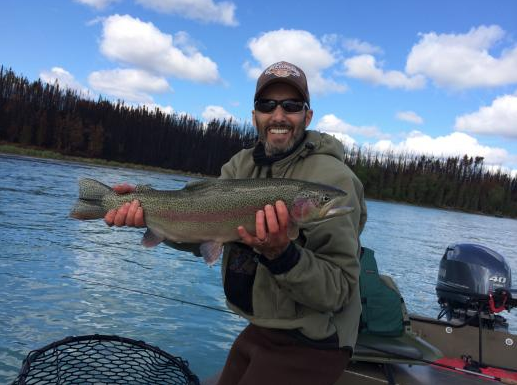By Dave Atcheson
The lead article, gracing the cover of the October issue of the journal Fisheries, details a recent study on how environmental changes may affect our salmon in both the near and distant future.
The study is spearheaded by lead scientist Erik Schoen, from the University of Alaska Fairbanks, and encompasses the work of various scientists throughout the region. The research uses my home river, the Kenai River, and its watershed, as a model to examine how both climate- and landscape-change may impact our fisheries.
First, it is a fact that climate change is occurring, and Alaska has warmed at more than twice the rate of the rest of the United States over the past 60 years, with rapid warming projected to continue through the end of the century. According to the study, exactly how rising stream temperatures, melting glaciers, and increased winter stream flows will affect various salmon populations is still unknown. Some will likely benefit while others will experience adverse effects.
Already, the study cites, we are seeing populations expand northward into arctic and subarctic regions. On the other hand, currently productive streams will likely see increased risks from flooding and drought. It is definitely a complex situation. While melting glaciers can moderate temperatures, which might benefit fish, they can also, for example, reduce the production of zooplankton, and thus the sockeye salmon that feed on them.
The Kenai River is fortunate to have two large lakes, Skilak and Kenai Lakes—what the study refers to as “proglacial” lakes—influencing it. These serve as a buffer of sorts, moderating the flow, turbidity, and temperature, which are influenced by the surrounding glaciers. This is not the case, however, with some of the lower Kenai Peninsula streams, which are fed largely through wetlands and may be at more immediate risk. That is because the wetlands, which are drying up, not only filter pollutants, but provide important nutrients and food, in the form of aquatic invertebrates. The study also looks at how direct human development, which the article says has increased 20-fold within a 30-year period, has affected the watershed. The human footprint, which covered 1 percent of the riparian zone of the lower Kenai River in the 1950s, now covers 12 percent. Increased human activity is also impacting the environment in other ways, such as through the introduction of invasive plant species, 109 of which have been documented.
Throughout the study a wide range of topics are investigated, including the proliferation of hatchery fish and the effect they may have on native stocks as the ocean warms. The researchers also delve into how commercial, sport and personal-use fisheries may be impacted, and how management may need to adjust in the face of environmental change. Land and fisheries managers already have a difficult time balancing user groups and politics with their biological objectives. Future conditions will likely be unpredictable and managers and policymakers will need to be creative as well as proactive.
With that in mind, the authors of the study suggest that we may also want to consider not only protecting areas that are productive now, but also those that may be productive in the future. In that regard, they specifically mention the Snow River, where, recently, plans were proposed, and later rescinded, for a hydro-electric dam.
Alaska is lucky to still have intact ecosystems and diversity within its salmon populations. It is that unimpaired habitat and diversity of runs, with run timing varying within specific watersheds, which help maintain the strength and continuation of our salmon stocks. Hopefully managers as well as politicians and the general public, will strive to further understand the changes taking place and will press for further studies as well as for action when it is warranted. It has been shown that climate change is already altering the environment in unprecedented ways, and we will need to be prepared for all the associated shifts, including fluctuations in salmon productivity.
Anyone interested in this topic will gather valuable insight from this work.



